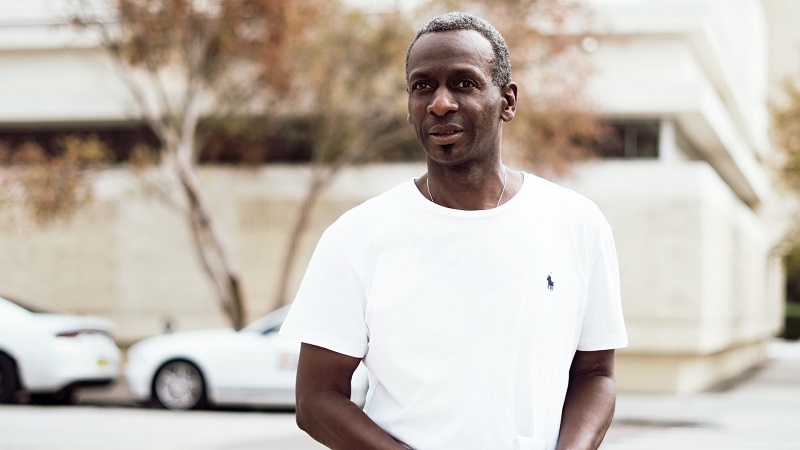A comprehensive environmental racism definition is: intentionally or unintentionally targeting minority communities through environmentally harmful facilities and policies. The term was first coined in 1982 by Dr. Robert Bullard, who noted that living near hazardous waste sites (such as landfills, incinerators, chemical plants, refineries, and other industrial sites) causes disproportionate harm to underserved populations. Research corroborates his findings, too. For example, one study found that 75% of communities close to landfill sites that are deemed “harmful” are predominantly Black. Another study notes that more than half of all people who live near hazardous waste are people of color.
Environmental racism causes mental and physical health issues affecting Black, Indigenous, and People of Color (BIPOC) communities. This is why it’s so important that we acknowledge and address the problem.
Keep reading to answer the question what is environmental racism and learn examples, causes, its impact, and, most importantly, how we can make positive change together.
What is Environmental Racism?
According to the environmental racism definition, it’s the disproportionate exposure of people of color to environmental pollution and health hazards, such as air pollution, hazardous waste, toxic waste, etc. It’s a form of structural racism that occurs when communities of color are disproportionately exposed to toxic chemicals, contaminated soils, inadequate healthcare, and polluted air, all of which affect public health and environmental health.
It can take many forms, from the placement of landfills or toxic waste sites in low-income neighborhoods to the absence of parks or grocery stores in minority communities to maintaining and operating polluting industries near schools.
Environmental racism differs from traditional forms of discrimination because it often happens outside our conscious awareness.
Examples of Environmental Racism
There are several notable examples of environmental racism. For instance, it might go unnoticed when certain neighborhoods are passed over for housing or schools because they’re in “undesirable” locations. Likewise, because it’s not in our backyard, maybe it’s not as striking that there aren’t any hospitals for miles around when someone gets sick in certain areas. Some people may not realize that there’s an oil spill or any other environmental pollution next door until it’s too late — these are all examples of environmental injustice at play. A more concrete example would be the result of redlining in North Carolina and New Orleans that forced Black communities into flood-prone and low-elevation areas.
“Examples of environmental racism can include unclean water sources, living near chemicals that cause cancer and other health problems, no access to fresh fruits and vegetables, and violence in neighborhoods.”
– Talkspace therapist Reshawna Chapple, Ph.D., LCSW
Other large-scale examples include:
- Land use practices that have zoning laws excluding people from living in specific neighborhoods based on race, such as Black communities and indigenous people
- Environmental policies that target communities of color, like waste disposal facilities near low-income neighborhoods
- Discriminatory policies, such as The Clean Water Act’s exemptions for agricultural and mining activities
Causes of environmental racism
Environmental racism results from a combination of factors, but a significant component is the history of racism in the United States. This history has created a legacy of racial segregation and discrimination that still exists today. Other factors include:
- Discriminatory housing policies, such as redlining and restrictive covenants
- Environmental laws that aren’t enforced effectively
- A lack of political power among people of color
- Land use policies that discriminate
- Environmental policies that target communities of color, such as waste disposal facilities near low-income neighborhoods where residents are more likely to be people of color
- Systemic racial discrimination and segregation
- Racism in the housing market
- Racism in the criminal justice system
- Disproportionate exposure to environmental hazards and toxins
- The institutional racism that devalues people of color and their cultures
- Social injustice
- Lack of environmental protection among areas with indigenous people
The Harmful Impacts of Environmental Racism
Environmental racism has severe and harmful impacts. For example, it can affect property and finances. It can cause loss of life or livelihood and economic problems like lost work opportunities or paying higher rent.
“There are many harmful impacts of environmental racism, including mental trauma and PTSD symptoms, feeling unsafe, violence in the community, and illnesses like cancer, diabetes, and asthma.”
– Talkspace therapist Reshawna Chapple, Ph.D., LCSW.
Social issues
There’s more to be concerned about, though. Environmental racism can also result in social issues, like isolation from those not affected by it who might struggle (or refuse) to recognize the problem. Then, there are political problems, such as not having a voice or say in how your community functions.
Mental health
Climate change has also highlighted more instances of environmental racism. For this, climate change and mental health have a more direct connection than most people realize. It’s not just social impacts that are problematic, though. Environmental racism can severely affect one’s health and well-being. Types of anger, depression, emotional stress, and racial trauma are all common in people who experience this form of discrimination.
Lack of access to food and healthcare
Communities without access to adequate housing, education, or healthcare are obviously disadvantaged. The effects aren’t surprising.
Black Americans are more likely to live near toxic waste sites and less likely to have access to healthy foods or medical care. Communities with no grocery store means residents often have to turn to higher-cost, fewer option convenience stores or fast food. They’re also at risk for health complications, including higher rates of heart disease and diabetes.
Physical health
These health issues can lead back up the chain. Low-income communities often lack access to healthcare systems equipped with special facilities for treating these diseases (such as diabetic clinics). As a result, some communities experience higher mortality rates from preventable causes as they lack easy access to preventative medicine or emergency services if something goes wrong.
Making Change
There are several ways to get involved, and it’s never too late to start addressing environmental racism. Some of the best options for how to deal with racism in the context of the environment include:
- Vote: Go out and vote. Yes, it can be tedious and, at times, feel unproductive, but it’s one way you can ensure your voice is heard. Whether national politics or local issues (like zoning laws), every vote counts towards making change happen.
- Volunteer: Become more active in your community. This can mean volunteering at local shelters and food banks or joining a local organization that helps people in need.
- Join a nonprofit: Join a nonprofit organization that focuses on equality. You don’t need any special skills. All that matters is that you care about solving the problems of environmental racism today.
- Donate: It can be powerful to donate to local organizations that provide services to low-income communities and others who are underserved.
- Donate blood to help save lives in a time of need
- Donate money and supplies to various organizations
- Donate to groups that provide medical care and assistance to people in need
- Get involved: Attend community meetings to discuss issues and how they affect people and communities in need.
- Support legislation: Educate yourself and support legislation protecting the rights of underserved communities and populations.
- Raise awareness: Talk about issues that affect low-income communities. You can encourage your friends and family to donate to organizations like The Coalition for Immokalee Workers or the National Domestic Workers Alliance (NDWA).
- Become a medical volunteer: Consider going on a mission trip or contacting your local hospital for opportunities.
- Work with your employer’s human resources department: See if they offer any benefits for volunteering or are willing to match funds you donate toward charitable causes.
It is possible to work together and make changes in our communities (both rural and urban) to address environmental justice. Everyone deserves access to healthcare, safe housing, healthy food, clean air, water, and green spaces.
Has environmental racism impacted you or a loved one’s mental health? Talkspace is an online therapy platform that offers affordable, convenient, and accessible mental health care. Mental health is important, especially if we want to change the world. The first step is caring for your mind, body, and spirit.
Sources:
- RCED-83-168 siting of hazardous waste landfills and their correlation … US General Accounting Office. https://www.gao.gov/assets/rced-83-168.pdf. Accessed October 27, 2022.
- Patnaik A, Ade C, Son J, Feng A. Racial disparities and climate change – psci. Princeton University. https://psci.princeton.edu/tips/2020/8/15/racial-disparities-and-climate-change. Published August 15, 2020. Accessed October 27, 2022.
- Associate CBSC, Berkovitz C, Associate SC, et al. Environmental racism has left black communities especially vulnerable to covid-19. The Century Foundation. https://tcf.org/content/commentary/environmental-racism-left-black-communities-especially-vulnerable-covid-19/. Published March 15, 2022. Accessed October 27, 2022.
- Spiller E, Proville J, Roy A, Muller NZ. Mortality risk from PM2.5: A comparison of modeling approaches to identify disparities across racial/ethnic groups in policy outcomes. Environmental Health Perspectives. 2021;129(12). doi:10.1289/ehp9001. https://ehp.niehs.nih.gov/doi/10.1289/EHP9001. Accessed October 27, 2022.
Talkspace articles are written by experienced mental health-wellness contributors; they are grounded in scientific research and evidence-based practices. Articles are extensively reviewed by our team of clinical experts (therapists and psychiatrists of various specialties) to ensure content is accurate and on par with current industry standards.
Our goal at Talkspace is to provide the most up-to-date, valuable, and objective information on mental health-related topics in order to help readers make informed decisions.
Articles contain trusted third-party sources that are either directly linked to in the text or listed at the bottom to take readers directly to the source.




